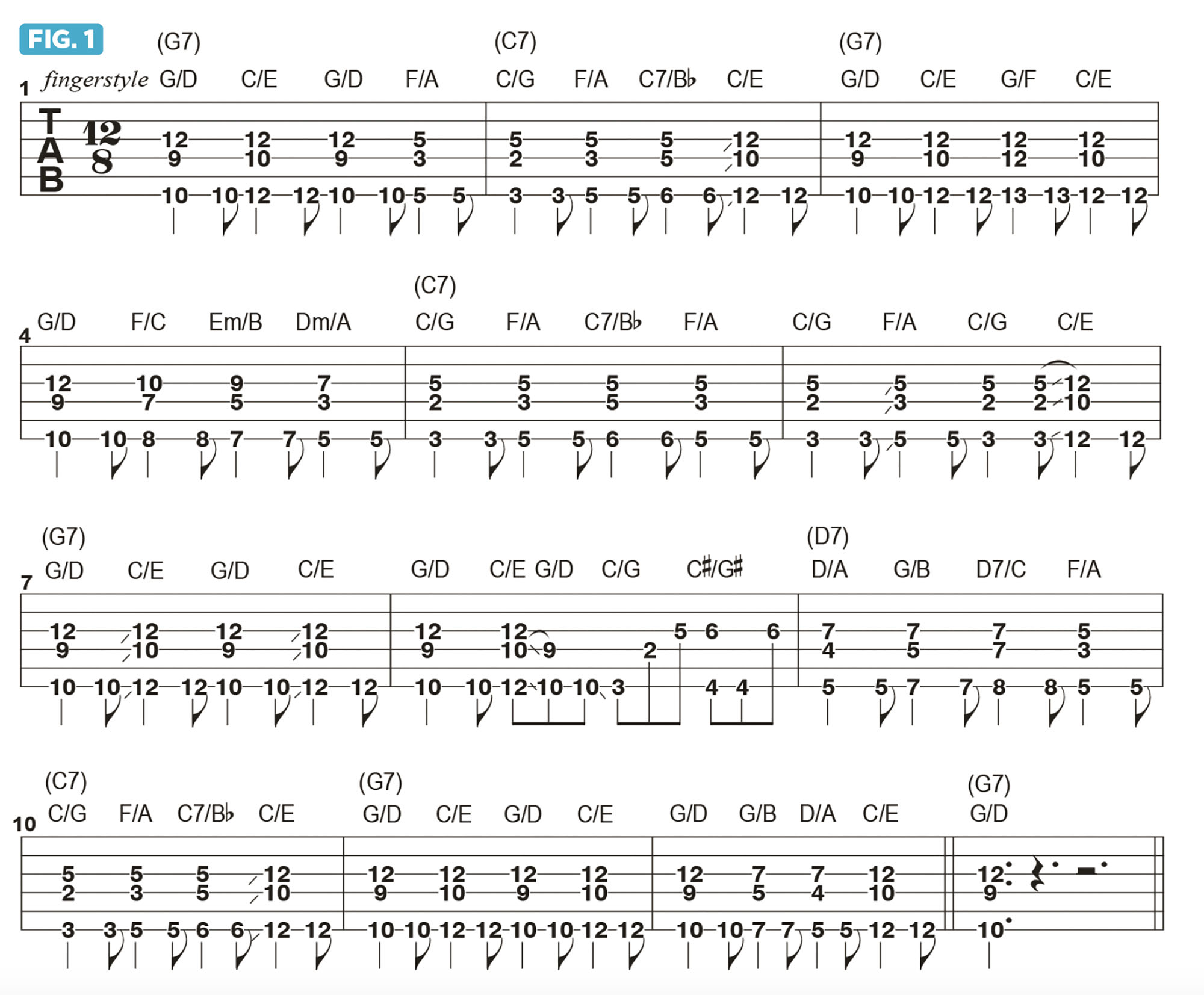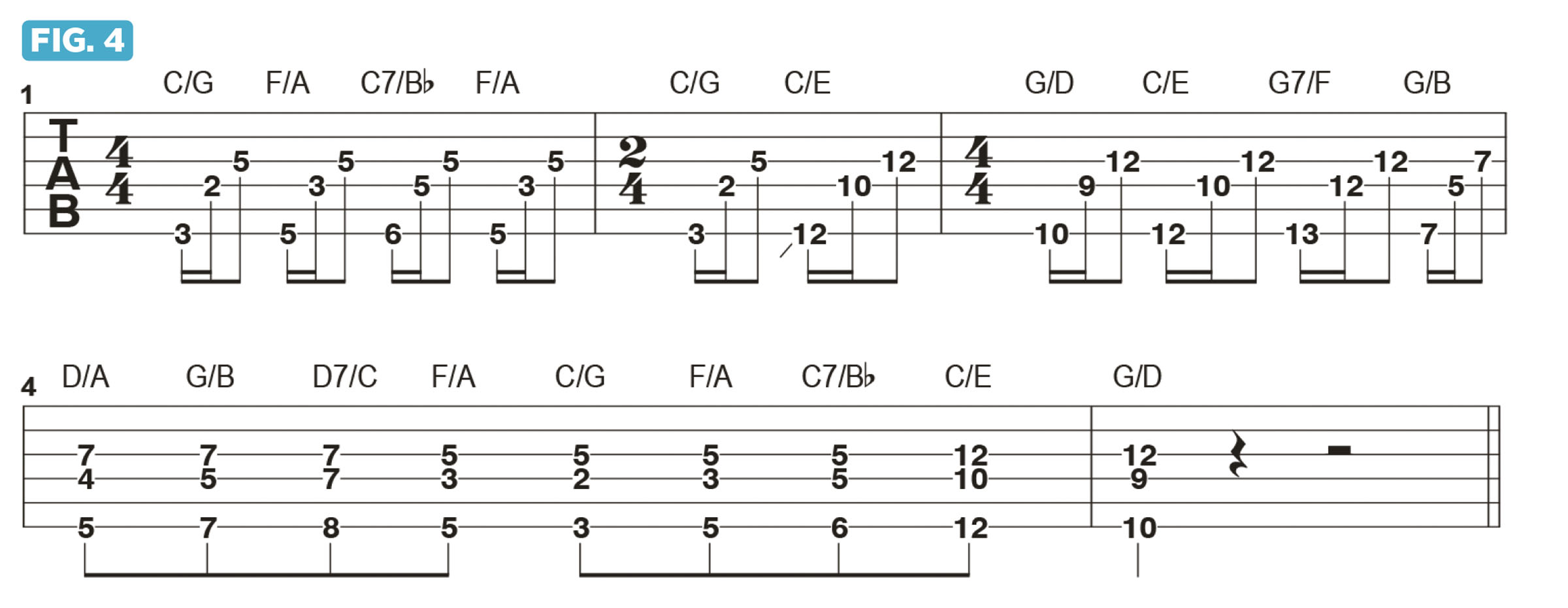“Using these wider voicings creates an interesting and warm-sounding rhythm pattern that’s also fun to solo over”: How inverted boogie riffing can shake up your blues
The shuffle is a popular rhythmic feel used in various styles of music, especially blues. I play a lot of blues-based music in my live sets, and a fair amount of those tunes feature a shuffle feel, which is built on an undercurrent of eighth-note triplets and “swung” eighth notes.
A cool variation on the stock Jimmy Reed-style “root-5th/root-6th” blues shuffle rhythm pattern (heard in Bright Lights, Big City and Baby What You Want Me to Do) is to begin with the 5th of each chord as the lowest note in the voicing, or “in the bass,” instead of the root note being on the bottom.
With the 5th as the lowest note, you can alter the voicings on every beat, so that the bass notes move up and down the neck.
Figure 1 presents a rhythm pattern for a 12-bar blues shuffle in the key of G, with all of the chords in the I - IV - V progression – G, C and D – voiced as three-note shapes with the 5th in the bass. Using fingerpicking, I begin the pattern with a voicing that places D, the 5th of G, on the low E string, B, the 3rd, on the D string, and G, the root note, on the G string.
Figure 2 offers a clear picture of this voicing. While maintaining the high G note, the D then moves up to E while the B moves up to C, sounding a C/E chord. This shift is illustrated in Figure 3, beats 1 and 2.
Bar 1 of Figure 1 ends with F/A, voiced A, F, C, low to high. Bar 2 moves to the IV chord, C, and here I simply transpose the G/D voicing down to C, with G, the 5th of C, now in the bass, and E (the 3rd) and C (the root) above it. Beat 2 repeats the F/A chord, followed by C7/Bb, as the low A note moves up to Bb, the b7th of C, and the F moves up to G, the 5th. Figure 4 offers a clearer look at these voicings.
Bar 3 of Figure 1 ends with the previous C/E voicing, followed in bar 4 by a set of chord substitutions: G - F - Em - D, with each chord having its 5th in the bass. Bars 5 and 6 are essentially the same as bar 2, and bars 7 and 8 emulate bar 3. One twist here is that I end bar 8 with a chromatic walk-up from C/G to C#/G#, setting up the move to the V (five) chord, D/A, in bar 9.
All the latest guitar news, interviews, lessons, reviews, deals and more, direct to your inbox!
For the V chord, I transpose the previous move up a whole step, sounding D/A - G/B - D7/C. Bar 4 of Figure 4 focuses on the shifts between these voicings.
Our 12-bar progression wraps up with a return to the IV chord, C, in bar 10, and the I chord, G, in bar 11. Bar 12 ends with a move to the V chord, D, followed by a final C/E, which I use to set up a return to G/D.
This approach may seem complicated, but it’s actually not, when you look at each of the three primary chords in the progression.
Using these wider voicings creates an interesting and warm-sounding rhythm pattern that’s also fun to solo over, which I will demonstrate next time. See you then!
Virtuoso guitarist/multi-instrumentalist Jim Oblon has toured and recorded with Paul Simon, Lucinda Williams and many others.
His latest album is 2023’s I Wanna Be Loved.




